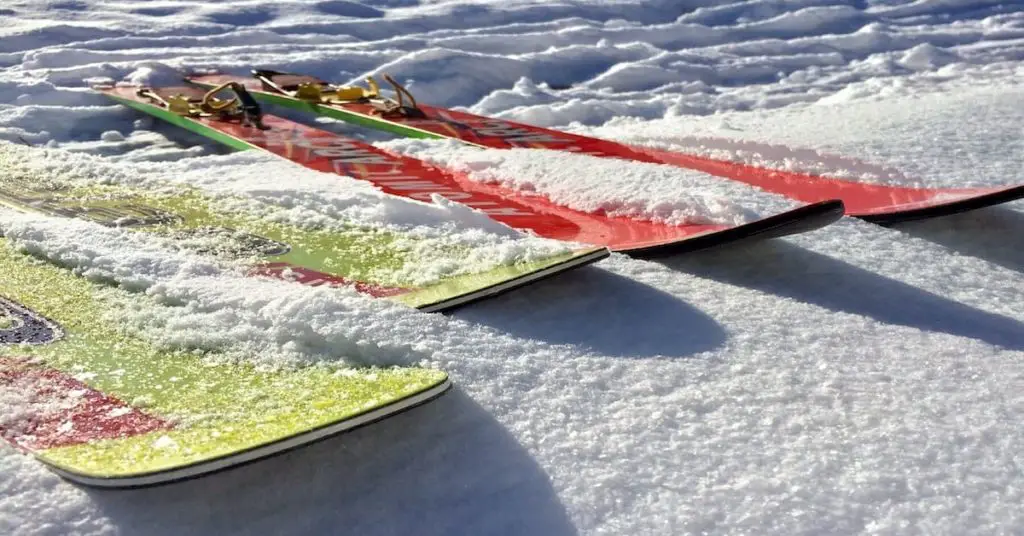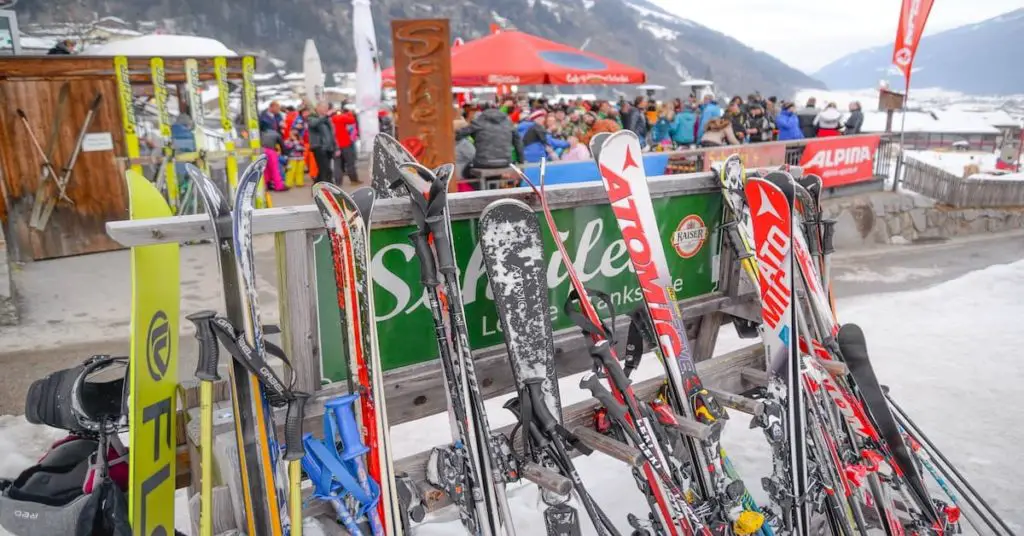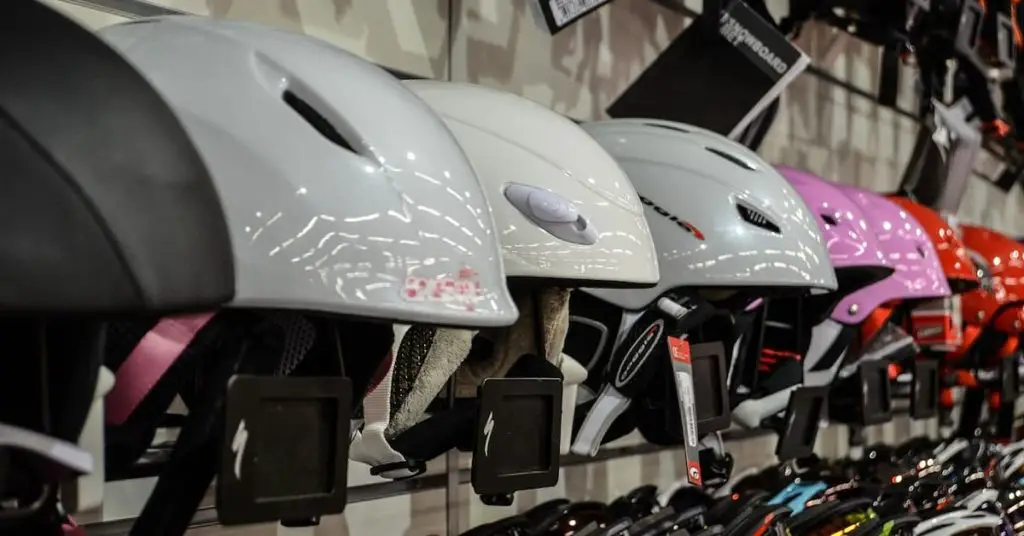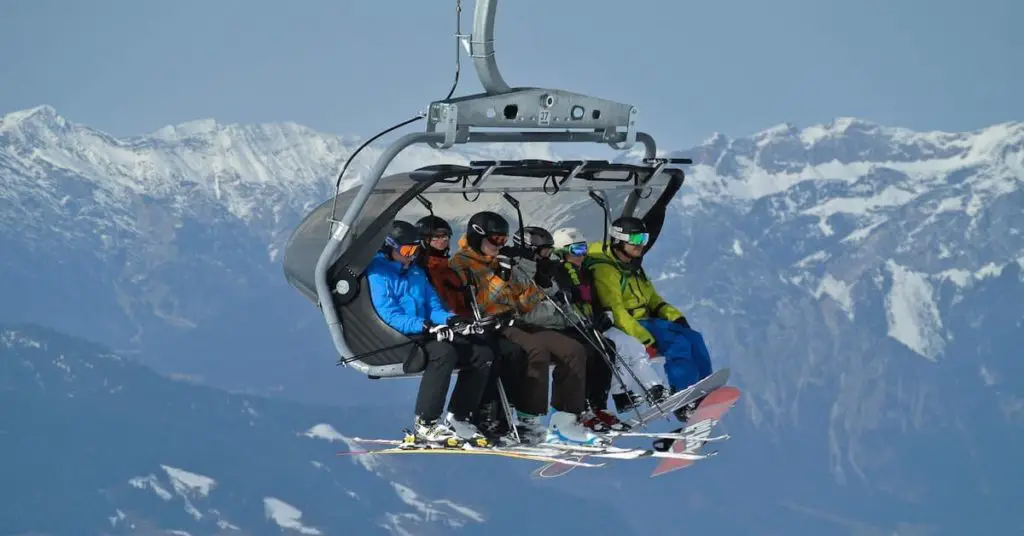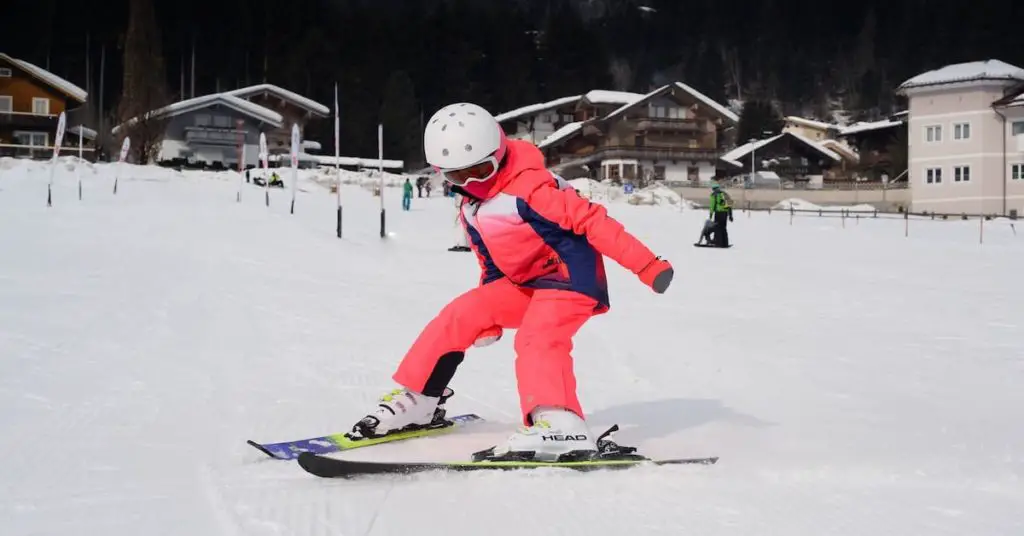Still remember my very first time shopping for a ski, and I have no idea what ski camber and rocker I should choose. It’s just too many different names and types. I took time to finger it out and share the information with people looking for a ski or snowboard.
All skis used to have full camber from tip to tail. Nowadays, there are many combinations of rocker and camber. Each manufacturer has its name for each. What I learn is to remember the rocker’s looks, not the name. So you know what you’re looking for and less stress to remember all the words. (even sometimes, it’s the same thing.)
Table of Contents
What is Ski & Snowboard Camber?
When talking about camber or rocker, they are the profile of skis and snowboards. And camber is the traditional profile. It has two contact points on each side of the ski or board and a slight upward curve in the middle. The section between the two contact points is the ski and boards’ effective edge that skiers use to make a turn. Also, it’s where contact with the snow when carving through a turn. Therefore, a skier can equally distribute weighted at the effective edge when initiating a turn. As a consequence, traditional camber is more stable and controlled while skiing.
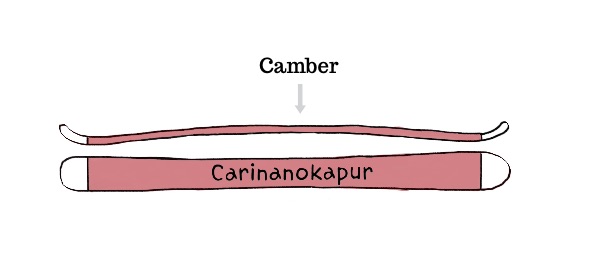
What is Ski & Snowboard Rocker?
Rocker, a.k.a. reverse camber or negative camber, is the opposite of traditional camber. Significantly, rocker skis and snowboards’ middle touches the snow and both upward end curves. The profile looks like water skis. This way, rocker skis and boards are easy to steer in the soft snow and flat surface with minimised risk of snagging an edge.
Ski & Snowboard Rocker Types
Classic Rocker
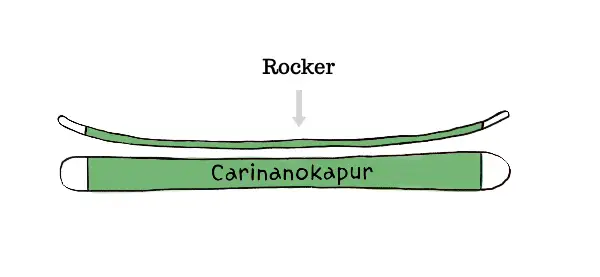
Tip Rocker
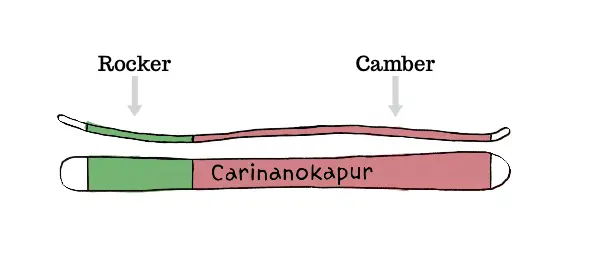
Tail Rocker
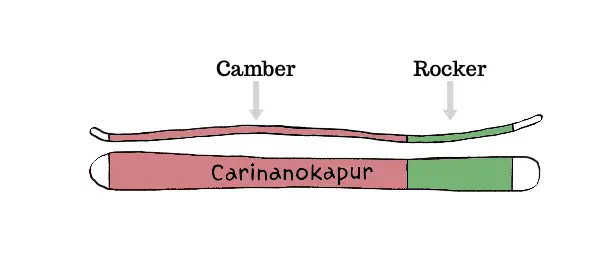
Tip and Tail Rocker
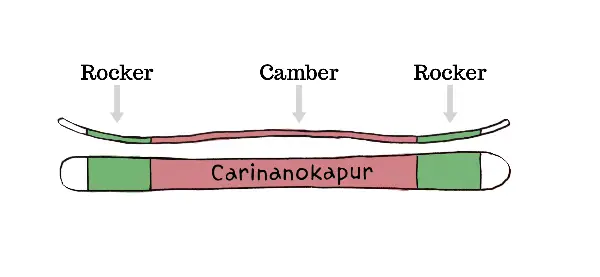
Camber and Rocker Pros and Cons
| Camber | Tip Rocker | Tail Rocker | |
| Pros | a. Easy handing b. Powerful and Precision carving c. Responsive turning d. Good at hold an edge e. Stability f. Quicker edge engagement i. Good traction at uphill ski j. Great for hard or icy snow | a. Improved flotation b. Easier turning c. Better ability to stay in a centred and balanced stance d. Manoeuvrable | a. Good for surfy skiing b. Easy pivoting |
| Cons | a. Need flex further to achieve a curve b. Challenge for powder skiing c. Require precise turn initiation | a. The tip of the ski is prone to vibrations while skiing. b. Don’t track as well on groomers and hardpack. | a. Reduced tracking stability in long turns b. Less backbone and energy when turning c. Loss of stability and edge grip on hard snow |
How to Choose
So what’s the better choice, camber or rocker? It’s not either choice. These days, it combines skis and snowboards, both underfoot camber and tip and tail rocker, in an infinite number of ways.
Since rocker specs and terminology vary by ski manufacturer and from model to model, it’s best to choose ski/board base on the terrains you’ll ski.
Groomed
Camber ski/board will be a good choice as it is more stable and controlled while skiing. However, ski/board with a cambered centre and tip rocker are an outstanding balance, forgiving errors, and are famous for many skiers.
All-mountain/Off-piste/Backcountry
Rockered tip – Easier turn initiation and good flotation
Cambered or flat midsection – edge control
Flat or low-rise tail – hold speed
Powder/Freeride/Big mountain
It was initially created rockered skis for powder skiing. The classic rockered tips and tails are best for deep powder skiing.
Twintip/Park/Freestyle
Cambered midsection – It helps pop off jumps.
Tip and tail rocker – Better transition
Choose by Ability
If not sure what terrains you will ski, you can choose on your ability.
Beginner – Camber or camber in the middle and rockered tip and tail
Intermediate – A cambered or flat midsection, with a tip rocker or tip and tail rocker
Advanced – Classic rockered tips and tails
Expert – Camber
Best Men’s & Women’s Beginner Ski>>
Conclusion
Camber creates more versatility with better edge control and stability. It benefits most ski styles, especially great at skiing at high speed and on firm or icy slopes.
Camber combined with rocker generally makes a more versatile ski. It features better flation and manoeuvrable.
Notably, along with camber and rocker, the ski’s length, width, turn radius, stiffness and flex pattern plays a significant role in the ski performance.
Here are our top selections below. I hope it can help you find the best skis for your next trip.
Best Men’s & Women’s Beginner Ski>>
If you enjoyed this, don’t miss other ski equipment reviews. [Click Here]
